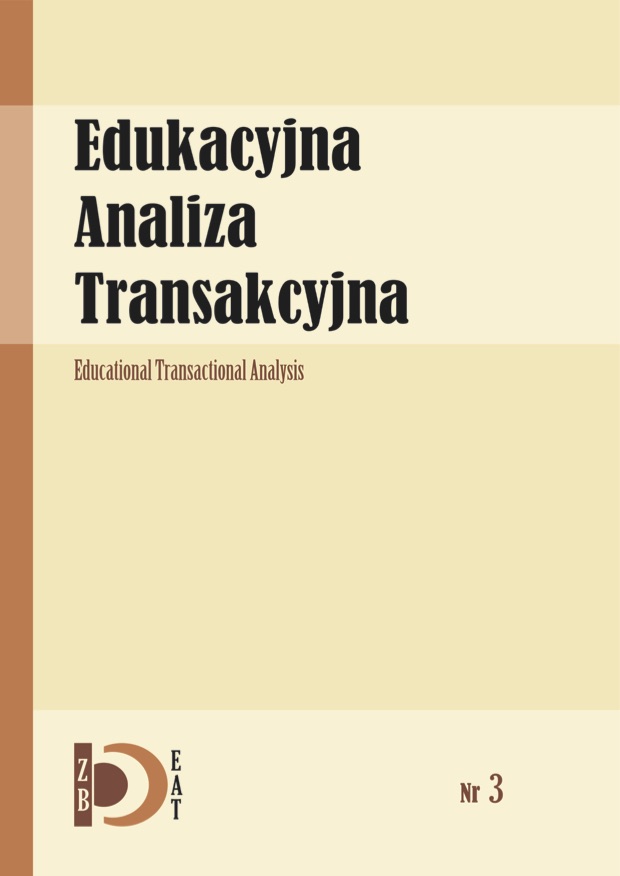The Use of Mind Maps in the Teaching Process
Mindmapping and the Verification of the Effects of Education in the Area of Educational Transactional Analysis
- Authors
-
-
- Keywords:
- mind maps, transactional analysis, teaching
- Abstract
-
This article attempts to show how the Mind Mapping method can be used in teaching and assessing the effects of education. A mind map is a multifunctional tool that could aid the educational process on many levels. Its formation allows for greater creativity and multidirectional thinking, which has a positive effect on the rate of learning and remembering information. It can also be-come an innovative way of enhancing teacher’s preparation for lessons and their actual conducting, which helps to pass the knowledge to students in an attractive form. It may also be a methodof verifying the student’s knowledge, which really streamlines the process of assessment. Insteadof reading long essays, the teacher can have an insight into students’ knowledge and skills ata glance. Four mind maps are presented in the article as examples; the maps were created by students taking an exam in educational transactional analysis. They clearly indicate that a teacher, looking at only one page, which does not take up a lot of time, can analyse the students’ way ofthinking as well as identify the areas sufficiently mastered by them and the areas in which they need some improvement.
- Downloads
-
Download data is not yet available.
- Author Biography
- Downloads
- Published
- 2014-12-18
- Issue
- No. 3 (2014)
- Section
- FOR INCORPORATION IN THE PRACTICE
- License
-
I am aware that the Educational Transactional Analysis journal is published under a Creative Commons license - Attribution (https://creativecommons.org/licenses/by/4.0/legalcode).
By submitting the article, I agree to make it available under this license
How to Cite
Similar Articles
- Dagmara Szymańska, The Impact of Embrace Therapy® in the Light of Transactional Analysis on the Closure of Needs ("Strokes") of the Inner Child, Changing the Perspective of Assessing the Situation and Releasing Difficult Emotions , The Educational Transactional Analysis: No. 12 (2023)
- Bożena Wieczorek, Automated assessment system as a supportive tool for teaching programming in Academic Secondary School of SUT , The Educational Transactional Analysis: No. 11 (2022)
- Dorota Pankowska, dr hab., Analiza transakcyjna w edukacji czy edukacyjna analiza transakcyjna? , The Educational Transactional Analysis: No. 1 (2012)
- Anna Pierzchała, dr, Edukacyjna analiza transakcyjna a inne nurty pedagogiczne wyrosłe na gruncie koncepcji psychoterapeutycznych , The Educational Transactional Analysis: No. 1 (2012)
- Jarosław Jagieła, dr hab.prof. AJD, [rec.] Stewart, I., Joines, V. (2016). Analiza transakcyjna dzisiaj , The Educational Transactional Analysis: No. 5 (2016)
- Wiga Bednarkowa, dr hab. prof. AJD, [rec.] J. Jagieła, A. Sarnat-Ciastko, Dlaczego analiza transakcyjna? Rozmowy o zastosowaniu analizy transakcyjnej w pracy nauczyciela i wychowawcy , The Educational Transactional Analysis: No. 4 (2015)
- Jarosław Jagieła, Psychopedagogy of meaning and value, that is about the relationship between existential therapy and transactional analysis. (part 6) , The Educational Transactional Analysis: No. 10 (2021)
- Zbigniew Wieczorek, dr, „Lustereczko, powiedz przecie...”, czyli analiza transakcyjna i neurony lustrzane , The Educational Transactional Analysis: No. 1 (2012)
- Adrianna Ciastko, dr, Edukacyjna analiza transakcyjna na XXI Konferencji PTDE , The Educational Transactional Analysis: No. 4 (2015)
- Małgorzata Lubojańska, mgr, Czy analiza transakcyjna może stać się pomocnym „narzędziem” w pracy nauczyciela? , The Educational Transactional Analysis: No. 2 (2013)
You may also start an advanced similarity search for this article.
Most read articles by the same author(s)
- Dorota Gębuś, dr, Jarosław Jagieła, dr hab.prof. AJD, Name giving – the beginning of the biography and the script , The Educational Transactional Analysis: No. 5 (2016)
- Dorota Gębuś, dr, The role of parental do’s and dont’s in shaping individual’s creativity. Sources of creativity inhibitors from the perspective of transactional analysis , The Educational Transactional Analysis: No. 5 (2016)

